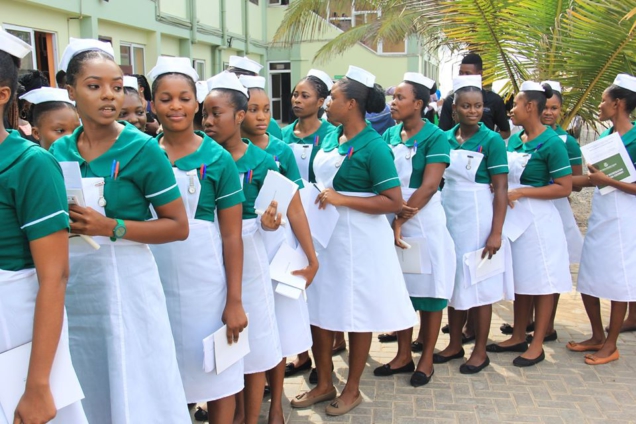Ghana's health workforce represents about 67% of the number needed for primary health care.
For six health care professionals, it is less than 50% of what is required. This trend is likely to persist until 2035 if no action is taken.
This is according to research conducted by three scientists, Dr James Avoka Asamani of the World Health Organization, Dr Christmal Dela Christmals, and Prof. Gerda Reitsma, both at the North-West University in South Africa.
The research which was published in the Public Library of Science journal, PLOS ONE on 28 September 2021 also reveals that the country needs at least 221, 593 health professionals across eleven categories in primary health care.
That number required would grow up to 495, 273 by 2035.
Currently, the country’s stock of health workers is about 148, 390, growing at 5.6% annually. By 2035, the total number of healthcare workers could rise to 333,770.
Using a need-based analysis of the country’s population, disease burden and a nationally representative sample to assess the service delivery practices of health workers, the study revealed that the country has 12, 786 midwives or 91.3% instead of 14,002
According to the scientists, by 2025, there would be an excess of 7,170 midwives, which would be more than a 40% surplus as a result of the current rate of training midwives.
For doctors, there is a deficit of 7,876 (or 56% shortage); 6,962 shortage of professional general nurses (10.4% shortage); 3,226 shortage of medical laboratory scientists (70.4% shortage) and 2,941 deficits for pharmacists (73.7% shortage).
For the Community-based Health Planning and Services (CHPS) policy to succeed, there is an urgent need for an additional 17,293 community health nurses where the shortage was 41.4%.

The study recommended Ghana’s health workforce strategy increase intake of Pharmacy Technicians by more than seven-fold, General Practitioners by 110%, Registered general Nurses by 55%, whilst Midwives training is scaled down by 15%.
However, an investment of about US$ 480.39 million is required to correct the gaps identified.
At least US$ 158 million (up to US$ 2.374 billion by 2035) must also be budgeted for the health sector payroll to employ and sustain existing employees.
Lead author, Dr Asamani tells JoyNews, the study is the first of its kind to be conducted in Ghana using population needs-based analysis that included more than 95% of the causes of illness, injuries, risk factors and deaths.
He said the findings are not entirely surprising.
"It corroborates previous works and evidence that Ghana is closing in on its health workforce needs, but more work must be done," he said.
He however added that, as Ghana is on the list of safeguard countries by the World Health Organization, a comprehensive health labour market analysis is essential to engage all stakeholders nationally and internationally.
A Ghanaian scientist at the Centre for Health Professions Education at the North-West University in South Africa, Dr Christmals notes that given fiscal space challenges, the government needs to actively pursue opportunities to export nurses and midwives.
The study covers 11 categories of health workers including Community Health Nurse, General Practitioner (General Doctor), Laboratory Scientist and Technician.
Others are; Midwife, Nutritionists, Dieticians and Pharmacists.
The rest are Pharmacy Technician, Physician Assistant (Medical) and Registered General Nurse.
Latest Stories
-
Blinken says China helping fuel Russian threat to Ukraine
2 mins -
MHA declares May as Purple Month for Mental Health Awareness
17 mins -
WAEC arrests former headmaster over illegal students registration
28 mins -
MeToo founder Tarana Burke defiant after Harvey Weinstein ruling
34 mins -
Be alert, insist on decent messages – Dwumfour tells media
1 hour -
Father jailed 10 years for burning daughter’s genitals with hot cutlasses
1 hour -
I aim to help Ghana produce world-class athletes – Asamoah Gyan
1 hour -
Ashanti Regional Minister alleges sabotage in electricity supply
1 hour -
2024 Elections: Dampare urges Ghanaians to prioritise patriotism and display maturity
2 hours -
‘Let it rot’ campaign hits fish prices in Egypt
2 hours -
Otumfuo chalks 25 years on Golden Stool today
2 hours -
Saudi could get first Miss Universe contestant this year
2 hours -
Ghana Shippers’ Authority initiates steps to sign Service Level Agreements with stakeholders
2 hours -
Fuse ODG supports rising artiste, Fred Kobby, with funds for music video
2 hours -
Mohbad’s toxicology result finally ready
2 hours

